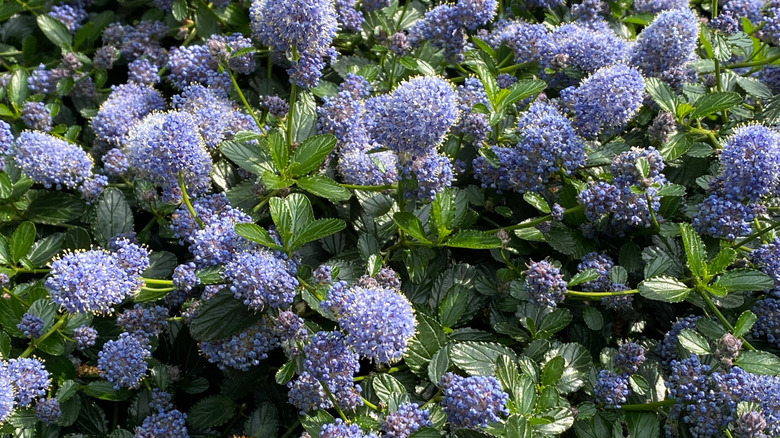Why Some Gardeners Are Ditching Hydrangeas (And What They're Replacing Them With)
Hydrangeas are such an iconic flower that it may be difficult to imagine a landscape without them. But after hundreds of years of popularity, many gardeners are now ditching hydrangeas in favor of more resilient flowering plants. As hotter, drier weather becomes more common in many areas of the U.S., hydrangeas are simply less likely to thrive than they used to.
Hydrangeas used to be easy to grow in USDA hardiness zones 3 to 9, where the biggest concerns were making it through winter and avoiding any hydrangea pruning mistakes. Gardeners could count on an abundant display of flowers through the summer and sometimes into fall. But hydrangeas are water-loving plants; they prefer moist soil and evolved to live in humid conditions. They also use water to cool themselves off in high heat. These needs are incompatible with the hotter summers and longer droughts that climate change has made our new reality. Gardeners are noticing crispy leaves, dull flowers, and drooping stems. Watering more often doesn't necessarily help, because it leaves the plants more vulnerable to fungal diseases at a time when they're already under stress from the heat. The problem is especially relevant for gardeners in zones 8 to 10, but even gardeners further north have noticed failing hydrangeas.
Climate change has also disrupted our usual seasonal patterns — it may freeze and thaw multiple times, leaving hydrangeas more vulnerable to frost damage. This is particularly troublesome for hydrangeas with flowers that grow on old wood, since the canes must make it through the winter to bloom. Fortunately, there are several other flowers you'll adore if you love hydrangeas.
Drought-tolerant flowers to grow instead of hydrangeas
Some hydrangeas can cope better in dry conditions than others, and some grow flowers on new wood rather than old — for example, the panicle hydrangea (Hydrangea paniculata). Still, it's wise to look into alternatives because no hydrangea is truly drought-tolerant. Even regions that have historically been wetter may not be able to offer the right conditions anymore, and you'll save money on your water bill with climate-resilient plants.
Other native flowering shrubs are a good place to start, such as buttonbush (Cephalanthus occidentalis), hardy in zones 5 to 11. It can handle a wide range of conditions: while it prefers wet, swampy areas, it adapts well to regular garden soil and will simply produce fewer flowers when conditions are drier. Another native option is California lilac (Ceanothus), a genus of around 50 plants of various sizes that are all remarkably drought-tolerant. With beautiful flowers that grow in clusters, Ceanothus provides some similar aesthetic value to blue hydrangeas and is hardy in zones 7 to 10. Both of these plants are wildlife-friendly.
Also look to non-native, drought-tolerant flowering shrubs. Lavender is native to the Mediterranean, so it can easily handle dry conditions. English lavender (Lavandula angustifolias) is most common and is hardy in zones 5 to 10, while Spanish lavender (Lavandula stoechas) is even more drought-resistant and hardy in zones 8 to 11. Rose of Sharon (Hibiscus syriacus), a type of hibiscus, features gorgeous flowers and can tolerate neglect, heat, and a range of soil types. It's hardy in zones 5 to 9, though it grows quite large and can become weedy.

